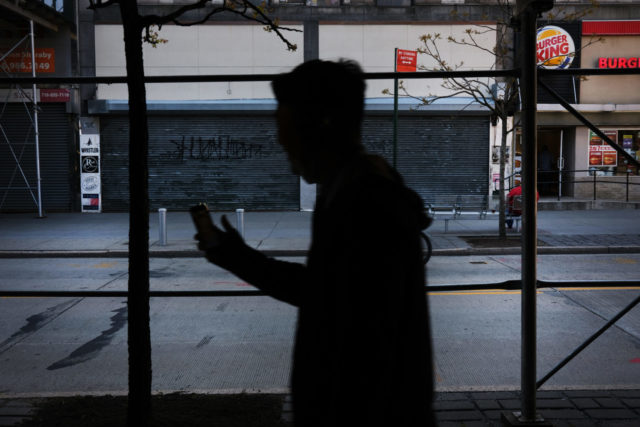
By Tami Luhby, CNN
(CNN) — The nation’s poverty rate rose to 11.4% last year, but the first two rounds of federal stimulus payments helped keep 11.7 million Americans out of poverty, according to Census Bureau data released Tuesday.
The payments, a key part of the unprecedented federal response to the economic havoc wreaked by the coronavirus pandemic, prompted a decrease in an alternative poverty measure to 9.1% in 2020, the Census Bureau said.
Last year was the first time the Supplemental Poverty Measure, which began in 2009, was lower than the official rate. This measure takes into account certain non-cash government assistance, taxes and needed expenses — addressing a major flaw in the official rate, economists say.
Without the stimulus payments, the alternative measure would have risen by about 3.6 percentage points, Census said. In 2019, the supplemental rate was 11.8%.
The official poverty rate rose in 2020 from a historic low of 10.5% a year earlier. It was the first increase in poverty after five years of decline. Some 37.2 million people were in poverty in 2020, an increase of 3.3 million from the year before.
Economic chaos
The pandemic upended the US economy early last year, costing millions of Americans their jobs as states forced non-essential businesses to close and people to stay home in an effort to stop the virus’ spread. Though conditions have improved markedly since then, the economy remains more than 5 million jobs short of where it was in February 2020.
However, an unprecedented response from the federal government spared millions of people from the worst ravages of the economic downturn. Congress passed three major relief packages, sending $3,200 in stimulus payments in 2020 and 2021, expanding the unemployment benefits system, beefing up food stamps and providing funds for low-income school children to buy food, deferring student loan payments, imposing a moratorium on evictions, sending relief funds to state and local governments and providing assistance to businesses.
The massive expansion of unemployment benefits lifted 5.5 million people out of poverty. Lawmakers expanded both the number of people eligible for jobless payments and the generosity of the benefits last year.
The stimulus payments, meanwhile, helped keep a wide range of Americans out of poverty because they were sent to a broad group of people, said Jim Sullivan, an economics professor at the University of Notre Dame, who has tracked the effect of government aid on poverty rates throughout the pandemic.
“It suggests improvements in well-being at a time when there was a sharp decline in employment and the job losses disproportionately hit the lowest-wage earners,” Sullivan said. “That speaks to the importance of the government response.”
The stimulus payments also helped significantly decrease the number of children experiencing poverty, particularly Hispanic and Black kids, according to the Census Bureau. Eligible families received hundreds of dollars for each of their children.
Though the US continues to combat the coronavirus, the main rescue programs — including the stimulus checks, expanded unemployment benefits and eviction moratorium — have now ended.
That may prompt an increase in the alternative poverty measure next year, Sullivan said. Already, he saw a small uptick in poverty in August, after about two dozen states terminated at least one of the pandemic jobless programs early.
RELATED: More children faced food insecurity last year during pandemic
Median income declined
Median household income fell to $67,500 last year, down 2.9% from 2019, which was the highest since 1967, the first year records were kept, according to the Census Bureau. It was the first statistically significant decline in median income since 2011.
The number of those who work full-time, year-round decreased by approximately 13.7 million people, the largest year-to-year drop since the agency began collecting comparable data in 1967.
The pandemic’s economic fallout hit Americans very differently, with lower-income workers bearing the brunt of the layoffs. Those who kept their jobs actually saw their earnings jump.
Some 53.5% of the job losses last year occurred to workers earning less than $34,000. That’s a big change from the Great Recession, when only 35.4% of job losses between 2007 and 2009 were among that group. (The earnings are adjusted for inflation.)
Median earnings for all workers fell 1.2% in 2020, but those who were employed full-time, year-round saw their median earnings soar 6.9%.
Uninsured rate stayed the same
The wave of pandemic-related job losses prompted fears that the uninsured rate would rise last year, but that didn’t turn out to be the case, according to the Census Bureau. There was no statistically significant change in the uninsured rate between 2018 and 2020.
Some 28 million people, or 8.6%, did not have health insurance at any point in 2020.
One major caveat: The agency counts people as insured even if they had coverage for only one day of the year.
The Census data reaffirmed the wide disparity in health insurance coverage among Americans of different races, which was laid bare during the pandemic.
Some 5.4% of non-Hispanic White Americans and 5.9% of Asian Americans were uninsured in 2020, compared to 10.4% of Black Americans and 18.3% of Hispanic Americans.
Fewer people were covered by their employers last year. The rate of job-based coverage fell 0.7 percentage points to 54.4%.
At the same time, there was a 0.5% increase in Medicare coverage, driven mainly by the aging of the population.
Overall, some 66.5% of people had private coverage last year and 34.8% had a public plan.
The Census Bureau’s data does not show an increase in Medicaid coverage, which conflicts with the Centers for Medicare and Medicaid Services data that found enrollment soared by nearly 10 million people from February 2020 to January 2021.
There is a lower likelihood of Medicaid coverage among the people the Census Bureau surveys for its annual report, which could affect the magnitude of the estimate, said Sharon Stern, an assistant division chief at the agency.
Food insecurity
The federal efforts to support struggling individuals succeeded in keeping hunger at bay last year for Americans overall, a recent US Department of Agriculture report found.
Overall, the share of households contending with food insecurity remained the same in 2020 as the year before at 10.5%, or 13.8 million households, according to the report, which is released annually.
However, food insecurity among families with children rose last year, despite the federal response. Some 14.8%, or 5.6 million households, were in this situation last year, up from 13.6% in 2019.
The-CNN-Wire
™ & © 2021 Cable News Network, Inc., a WarnerMedia Company. All rights reserved.



























